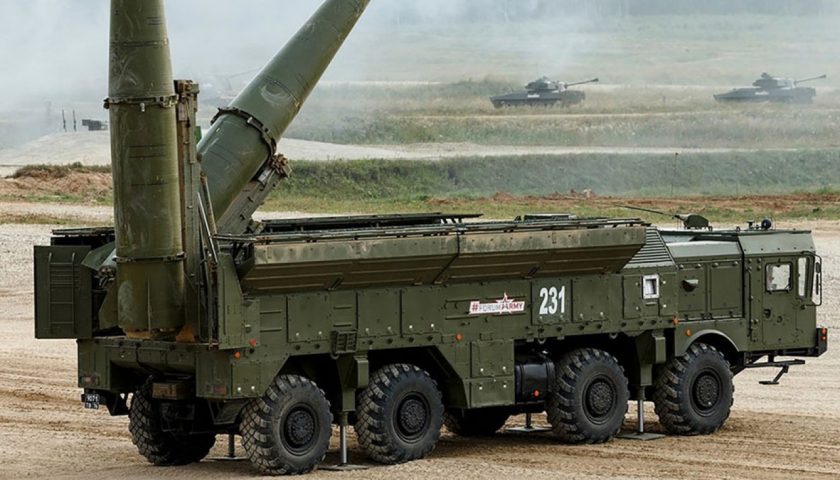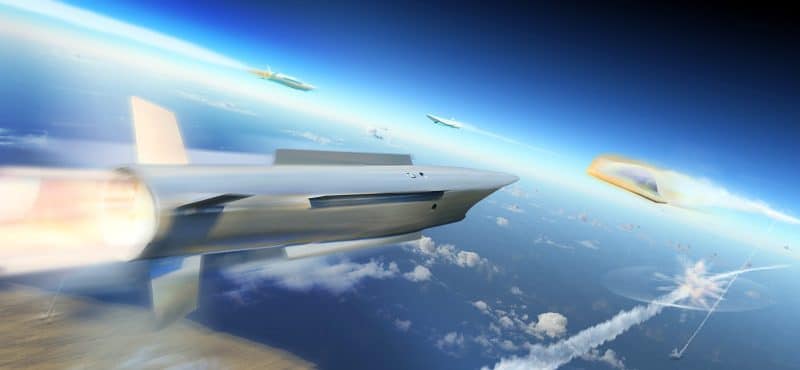In November 2019, Finland, Italy, the Netherlands and Portugal, led by France, joined forces within the new European Structured Permanent Cooperation, or PESCO, to design a new anti-ballistic system capable of countering emerging threats, including hypersonic missiles and gliders under the TWISTER program. One year later, Berlin decided to join the program, after the abandonment of the MEADS program by Washington. For the French MBDA and its Italian partner Aliena Aerospace, there was no doubt that the future program would be piloted by these two countries, the two companies being, with the French Thales, at the heart of the Eurosam joint venture which produces the only system European anti-ballistic systems to date, the SAMP/T and PAAMS systems and the Aster Block 1 and Block 1NT missiles, capable of intercepting short-range (inf 600 km) and medium-range (inf 1500 km) ballistic missiles respectively .
At the end of July 2022, however, the European Commission decided to award the design of the "European Hypersonic Defense Interceptor" program to a consortium composed of Spain, Germany, Belgium, Poland, the Czech Republic and Sweden. , as well as non-EU Norway, through the European Defense Fund. This caused the astonishment of the partners of the TWISTER programs outside of Germany, and in particular of MBDA which did not imagine that this program could escape it. Beyond the probable errors of assessment of the French company and its Italian partner, there is no doubt that the decision of the European Commission is surprising, not to say irritating. Indeed, 4 essential arguments militate in favor of a French management of this highly strategic European program, whether in terms of deadlines, costs, strategic autonomy and even Europe.
What is Ballistic Missile Defense?
Ballistic missiles again represent, for Europeans, a most tangible threat since the deterioration of relations with the Russian neighbour. Indeed, Moscow has a vast fleet of ballistic missiles of different types, ranging from the short-range Iskander-M to the future intercontinental RS-28 Sarmat, not forgetting the hypersonic airborne missile Kinzhal. Besides the fact that all Russian missiles can carry conventional and nuclear warheads, they all follow a ballistic or semi-ballistic trajectory, which is much more difficult to counter than traditional threats such as cruise missiles or aircraft. Indeed, because of this ballistic trajectory, these missiles reach altitudes, we speak of apogee for the maximum altitude reached, and of speed, putting them out of range of anti-aircraft systems designed to shoot down aircraft. To counter this threat, it is therefore essential to have dedicated solutions specially designed for this purpose, capable of reaching the very high altitudes where these missiles operate, and of intercepting them despite their often hypersonic or high supersonic speed, whereas he sometimes has decoys and maneuvering capabilities.

And since there are several types of missiles classified according to their range, and therefore their apogee, there are 3 families of anti-ballistic systems, also based on the interception attitude. The first is called endo-atmospheric, and most often consists of developments in long-range anti-aircraft systems. This is the case, in particular, of the famous American Patriot PAC-2/3, of the Franco-Italian Aster Block 1, or of the Russian S-300V and S-400 and their Chinese cousins, the HQ-9. These systems can reach targets at altitudes of 25 to 35 km, but offer only a limited interception capability in the ascending and descending phases of the missile trajectory, which requires very narrow firing windows, from the order of a few seconds, and a protection capacity limited to a few tens of km2 surrounding the anti-ballistic system, which can only precisely protect the intended target by being deployed nearby. On the other hand, through their anti-aircraft affiliation, these systems offer extensive maneuvering and interception capabilities that other systems do not have, in particular against ballistic missiles with a flattened trajectory or quite simply at short range.
The second family of anti-ballistic systems represents high endo-atmospheric interception, ie at altitudes ranging from 60 to 150 km. This is particularly the case of the American THAAD, and the future Russian S-500, as well as the possible Aster Block 2 envisaged by Paris and Rome. These systems extend the interception capabilities of endo-atmospheric systems, and are, like exo-atmospheric systems, equipped with inertial kinetic impactors dropped by the missile to intercept the target. They are still light enough to be really mobile, but do not offer interception capabilities below a minimum floor, of the order of 50 km for the THAAD, this having brought the Russians but also the Chinese and the Iranians to develop missiles with a so-called semi-ballistic trajectory, ie evolving between the ceiling of the Patriot and the Aster Block 1 NT, and the floor of the THAAD.

The third family, finally, is that of exo-atmospheric interceptors, heavy missiles bringing a kinetic impactor beyond the atmosphere and the Earth's gravity, and capable of protecting very large areas of territory, including against missiles in transit. . This is, strictly speaking, the only capability capable of neutralizing heavy ballistic missiles of the ICBM type or their submarine-launched version SLBMs, with systems like the SM-3 of the US Navy's AEGIS system or of the Russian A-236 in silos which protects Moscow and Saint-Petersburg. However, these systems have no capacity to respond to ballistic missiles evolving in a flattened trajectory or against short and medium range missiles having an apogee below the 200 km mark. Furthermore, they are often very heavy and very expensive, and the only such system considered mobile is the US-Israeli Arrow 3. As we will see below, this multi-layered aspect characterizing an effective anti-ballistic defense will play a determining role in favor of a return of MBDA and the entire Eurosam consortium to the head of the European EHDI program.
The crucial question of design deadlines

The rest of this article is for subscribers only
The Classic subscriptions provide access to
all articles without advertising, starting at € 1,99.
Newsletter subscription
Register for the Meta-Defense Newsletter to receive the
latest fashion articles daily or weekly


[…] […]
[…] It must be said that in this dossier, Berlin has done a particularly good job of strengthening its own positions and taking a position of leadership that will henceforth be difficult to contest in terms of European defence. First of all, Germany has, very probably intentionally, avoided including certain European countries in this initiative, in particular France and Italy, yet respectively the 2nd and 3rd economies and demography of the EU. On the one hand, it was obviously essential for Berlin to exclude these two countries since they have the only European offer in terms of anti-aircraft and anti-missile systems at medium and long range in Europe, with the SAMP/ T Mamba and the Aster 15/30/Block1NT missile. The presence of Rome and/or Paris would thus have considerably thwarted German hegemony, particularly in terms of the choice of systems, especially since the SAMP/T can replace, on its own, the German IRIS-T SLM and the American Patriot, with performance and capabilities superior to those two systems. By inviting Paris or Rome, Berlin would therefore have eroded its own grip on the whole system, especially since at the same time Germany was at work to exclude the French MBDA from the European program of …. […]